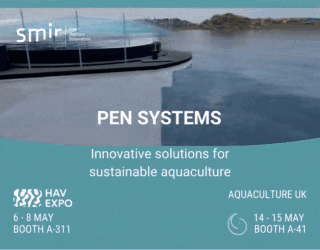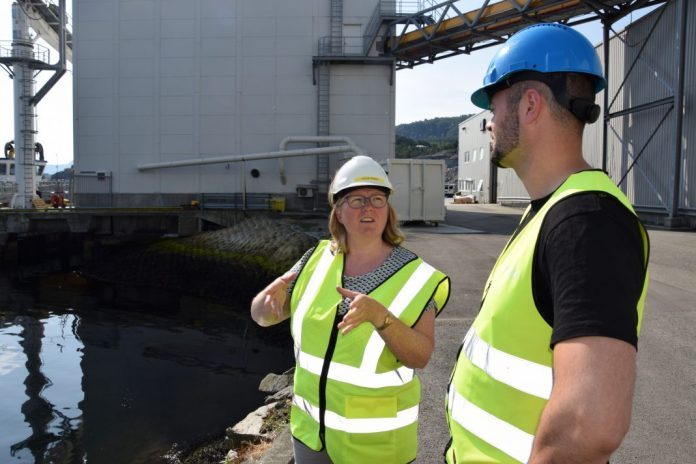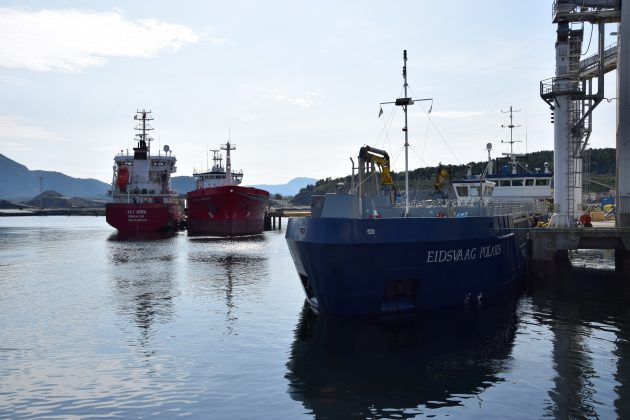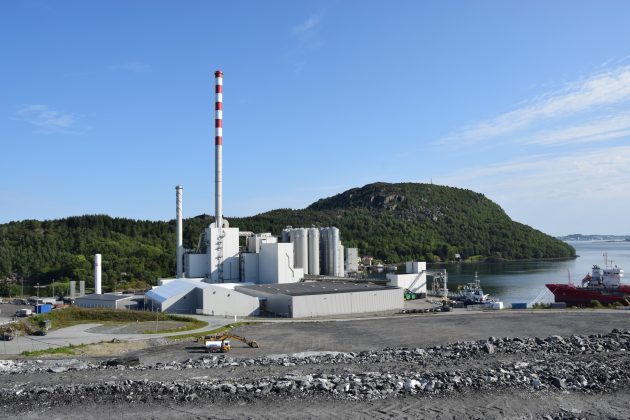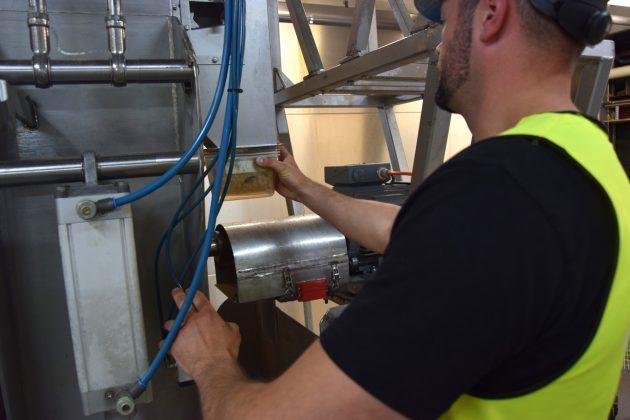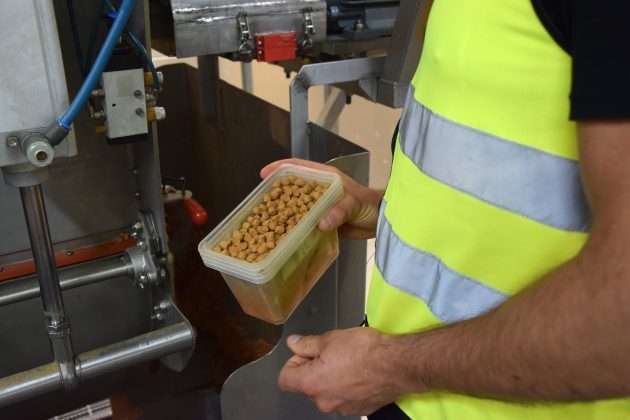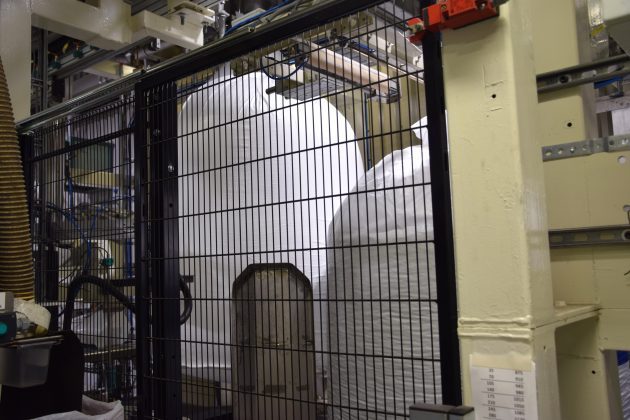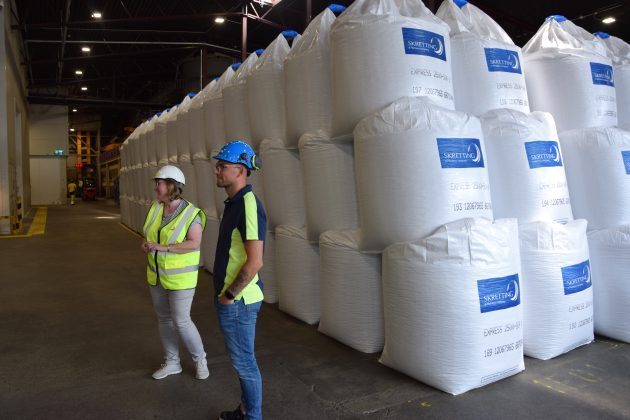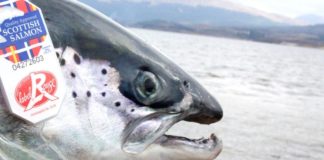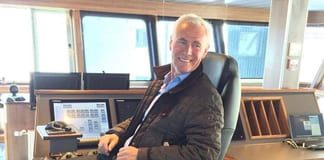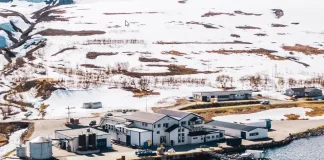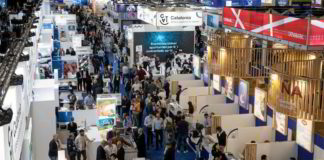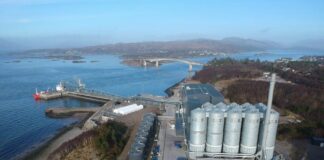In a pressured market where raw materials must be purchased up to a year in advance and customers come with their order no later than two weeks before delivery, feed producers must rely on good planning and good forecasts for how much volume they will be selling.
Based in Averøya, Western Norway, is Skretting’s most modern feed factory. Right at the water’s edge lies the factory which consists of a large white building with three production lines, some warehouse buildings, a number of silos, and an oil tanker which is firmly anchored as oil storage for the factory.
Down by the quay is “Eidsvaag Polaris”, one of two silo boats that supply feed to salmon farmers from Skretting Averøy. The boat has a capacity of approximately 1.100 tonnes of feed and has 64 separate silos that ensure that different types of feed are not mixed and which ensures traceability in the feed. Today, the factory delivers about 40 per-cent of the feed it produces without the use of sacks, but straight from silo to silo.
“We certainly want this percentage to be even larger,” said production director Hilde Roald.
Automation
At the very top of the production premises is the control room for the first parts of the production. One person has control over the dry goods that come into the factory. The raw materials, which can be anything from fish meal to insect meal, are tested and checked to ensure that the feed will contain the nutrients it needs.
“The person who sits here at all times is responsible for ensuring that the raw materials have the content and the qualities that are required,” said factory manager Aslak Bjørshol.
“You can compare it to baking bread. The meal must have the right properties for it to react and form bonds,” Roald added.
After the dry raw materials are checked they are sent over to the extrusion, this is where the wet and the dry mix form the pellets. At this station, three people sit and control the processes. Once in every half hour, they go down in the production area to control the pellets, otherwise, everything is fully automated.
“About 25 per-cent water is added during this process. When the pellets come out of the extruder, they are slightly fluffy. We can go down and look at them,” said Bjørshol.

We are happy with 14 days
In the warehouse at the factory at Averøy, there are several hundred bags of 750 kilos of feed lined up, three in height. It is no secret that there is a high turnover of feed in the factory. Production of feed is made to order, but the order of raw materials, which many of them come by boat from afar, must be made long before the feed order comes from the salmon farmer.
“It may be that we must enter into contracts for the purchase of raw materials as far as one year in advance, but also down to one month in advance. The order from the contract is then made weeks or sometimes months in advance, depending on where the goods are to be transported from,” said Roald.
“When we do not know for sure what is ordered from us and when, then we are completely dependent on good forecasts so that we have the raw materials in place when orders come in,” he added.
This is because there is no time or space to store raw materials for a long time.
“The raw materials cannot be stored for long at a time. Fortunately, we have good forecasts, it helps a lot. When it comes to orders from the salmon farmers, we are very happy if we get 14 days to produce the feed. But it’s biology. It is not the case that they always know how much the fish eats and how much feed they need a long time in advance,” said Roald.
Replace water with oil
Down in the production area, Bjørshol finds an empty plastic box and fills it with pellets that come straight from the extruder.
“Just feel them, they are fluffy and quite warm, but not so hot that you can’t touch them,” he said, squeezing one together.
After this process, the pellets are dried. In this way, one gets rid of the water from the feed. Bjørshol finds another pellet and divides it into two on the middle. Small cavities inside the pellet appear.
“These air pockets will eventually be filled with oil,” he explained.
Four freighters
Before the pellets leave the production room they are filled either in sack or sent straight to the silo on the quay. Along the assembly line, a 750-kilo bag is inflated with compressed air. Pellets flow into the bag before the air left in the bag is sucked out again. The bag is then sent out into the warehouse where it is picked up with a truck and placed in a free space.
“We have room to store about 5,500 tonnes of sack lining in our three warehouses,” said Skretting Process Technician Vegard Ohrvik. “Plus, what we can store in silo,” added Roald.
But it is not stored for long, preferably less than three or four days. Four boats arrive at the dock several times a week to pick up and transport the feed. Two vessels transport silos and one other, the sacks.
Exactly how much feed goes out of the factory, Skretting does divulge because it does not want to be affected by market considerations, but it is undoubtedly a relatively large number.
